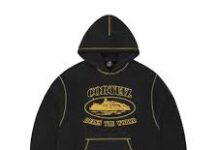If you call Brooklyn home, you’ve probably seen your share of curious raccoons, squirrels, or birds darting around the neighborhood. Sometimes, these animals get a little too comfortable and end up nesting in places they shouldn’t—like your chimney. While it might seem harmless at first, having wild animals take up residence in your chimney can spell trouble for your home and even your health. The good news? Acting quickly can save you a lot of headaches down the road. In this article, we’ll chat about why it’s so important to handle these animal visitors without delay, share some tips to spot their presence, and explain the best ways to handle chimney animal removal before things get out of hand.
Why Animals Love Chimneys (And Why You Shouldn’t)
Chimneys are like prime real estate for critters in the city. They’re warm, sheltered, and high up—perfect for any animal looking to avoid street-level dangers. Raccoons might use your chimney as a safe spot to give birth, while squirrels find it a cozy escape from the cold. Birds, especially chimney swifts, see your flue as a ready-made nesting site.
But what’s good for them can be bad for you. Animals can leave behind nesting material, droppings, and even get stuck and perish inside. This mess can clog your chimney, making it unsafe to use your fireplace or heating system. Worse yet, it can attract even more pests or cause bad odors to drift through your house.
Here’s a quick look at how some common culprits stack up:
| Animal | Why They Enter Chimneys | Risks They Bring |
|---|---|---|
| Raccoons | Safe spot for raising young | Clogs, disease, property damage |
| Squirrels | Warmth and shelter | Chewed wires, nesting blockages |
| Birds | Nesting site away from predators | Nests block airflow, fire risk |
| Bats | Dark, undisturbed roosting | Droppings (guano), health hazards |
How to Spot Unwanted Chimney Guests Early
Catching an animal invasion early is a real lifesaver. Luckily, there are some telltale signs you can keep an eye (or ear) out for:
- Noises: Scratching, squeaking, or flapping sounds coming from the fireplace or chimney, especially in the early morning or evening, often mean something’s inside.
- Unusual Smells: A musty or foul odor from your fireplace could be a sign of droppings or even a trapped animal.
- Debris: Twigs, leaves, or nesting material falling into your hearth are a dead giveaway.
- Visual Sightings: Occasionally, you might spot fur, feathers, or even a tail peeking out from the chimney cap.
If you notice any of these red flags, it’s time to act before the problem grows.
The Trouble with Waiting: What Happens If You Delay
Putting off animal removal might not seem like a big deal at first, but the problems can pile up fast. Here’s what you might be facing if you wait too long:
- Blocked Chimney: Nests or animal remains can completely block airflow, which means dangerous gases like carbon monoxide can seep back into your home.
- Fires: Dry nesting material is a fire hazard waiting to happen if you use your fireplace.
- Costly Repairs: Animals can damage the chimney liner, damper, or even chew through wires, leading to repairs that cost way more than a simple removal.
- Health Concerns: Animal droppings can carry diseases, and decomposing animals can attract bugs and create terrible smells.
“Addressing a chimney animal issue right away isn’t just about peace of mind—it’s about protecting your family, your investment, and your neighborhood from bigger problems down the road.”
Taking Action: Safe and Timely Removal
So, what’s the best way to kick out your unwanted chimney tenants? First things first: don’t try to handle wild animals on your own. Many carry diseases, and some (like raccoons or bats) can be aggressive if cornered. Plus, some species are protected by law, so removing them the wrong way can get you into legal trouble.
Here’s a simple plan you can follow:
- Call a Professional: Seek out local experts who specialize in humane animal removal. They know how to safely get animals out and keep them from coming back.
- Inspect and Clean: Have your chimney thoroughly checked and cleaned after removal. This gets rid of nests, droppings, and any lingering odors.
- Install a Chimney Cap: A properly fitted chimney cap is your best defense against future invasions. It keeps out animals while letting smoke escape safely.
- Schedule Regular Checks: Make it a habit to have your chimney inspected each year—especially before winter hits.
Wrapping Up: Peace of Mind Starts with Prevention
Living in Brooklyn means sharing space with all sorts of wildlife, but that doesn’t mean you have to invite them into your chimney. By staying alert and taking quick action at the first sign of animal activity, you can save yourself from expensive repairs and safety risks. Remember, a little prevention goes a long way—so don’t wait for a bigger problem to show up. If you suspect you’ve got furry or feathered squatters, call in the experts for chimney animal removal and rest easy knowing your home is protected.
Read more : Chimney Sweep































